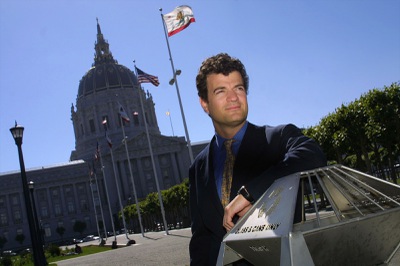Friday, May 21, 2010 | 2:01 a.m.
Sun coverage
Jared Blumenfeld is director of the Environmental Protection Agency’s Region 9, where he oversees U.S. environmental policy in Nevada, California, Arizona, Hawaii, the Pacific islands and 140 Western tribal nations. The environmental lawyer was appointed to the post in January after serving eight years as director of San Francisco’s Environment Department.
Southern Nevada has a spotty history with air quality. How is it doing?
In terms of meeting the national standards, Clark County is in compliance with the National Ambient Air Quality Standards, although it hasn’t yet been taken off the nonattainment list. It’s on the road to changing that status. It’s really something of a success story. Clark County has done a pretty good job of developing good local standards and innovations to help keep the air clean.
But the national director of the EPA announced this year that the standards for ground-level ozone would be strengthened. Won’t that mean Clark County’s air quality is no longer good enough to be in compliance with EPA standards?
The revised standard will be announced in the second half of this calendar year. The EPA is evaluating two options, both more stringent than today’s standard. There may be areas that won’t be in compliance once the new standards are in place. Whether Clark County is one of them depends on many factors. Looking at the past 10 years, the county has done a good job of adapting and coming up with solutions for its unique issues. The big issues in Clark County have been dust from construction, dust from unpaved and even some paved roads and dust blowing off vacant land.
What happens if the county is out of compliance?
Nevada, and Las Vegas in particular, will not be alone in that worry after this ozone standard is tightened. Many of the areas that are now in compliance won’t be anymore. In fact, it could be that much of the nation will be out of compliance. We’ll work with counties to create a plan to get into compliance as quickly as possible.
Why is the EPA changing the standard now?
The change should have happened a few years ago. We have an independent scientific review board at the EPA that looks at these standards and makes recommendations. During the Bush administration, they said ozone levels previously thought to be benign would actually be very harmful to sensitive populations. The report at that time fell on deaf ears. Soon after President Obama chose Lisa Jackson to lead the EPA, this was one of the first issues taken up.
One of the more persistent EPA projects in Southern Nevada has been the capping of the Sunrise Landfill. The county and Republic Services were ordered last summer by the EPA to begin the work. What has happened?
There was a settlement in 2008 in which Republic agreed to implement more than $36 million in work and 30 years of long-term operations and maintenance on the site. This year Republic began drilling wells to collect leachate, the liquid that drains from a landfill. We expect construction of the final landfill cover and storm water controls to begin in July and be completed by 2012. The closure work will include design and implementation of remedial measures, including construction of a final landfill cover, storm water control measures, installation of additional groundwater monitoring wells and landfill-gas-system upgrades.
Why is that project such a big deal?
The landfill is located two miles above the Las Vegas Wash, which discharges directly into Lake Mead, a primary drinking water resource for Southern Nevada, the Phoenix metro area and Southern California. In 1998, the landfill cover failed during a series of storms, sending waste into the wash. The project involves the cleanup of more than 49 million cubic yards of waste material still at the 440-acre site and the capping of the landfill to prevent the release of an estimated 14.8 million pounds per year of pollutants, including leachate, storm water pollutants, methane and nonmethane organic compounds into the wash.


Join the Discussion:
Check this out for a full explanation of our conversion to the LiveFyre commenting system and instructions on how to sign up for an account.
Full comments policy